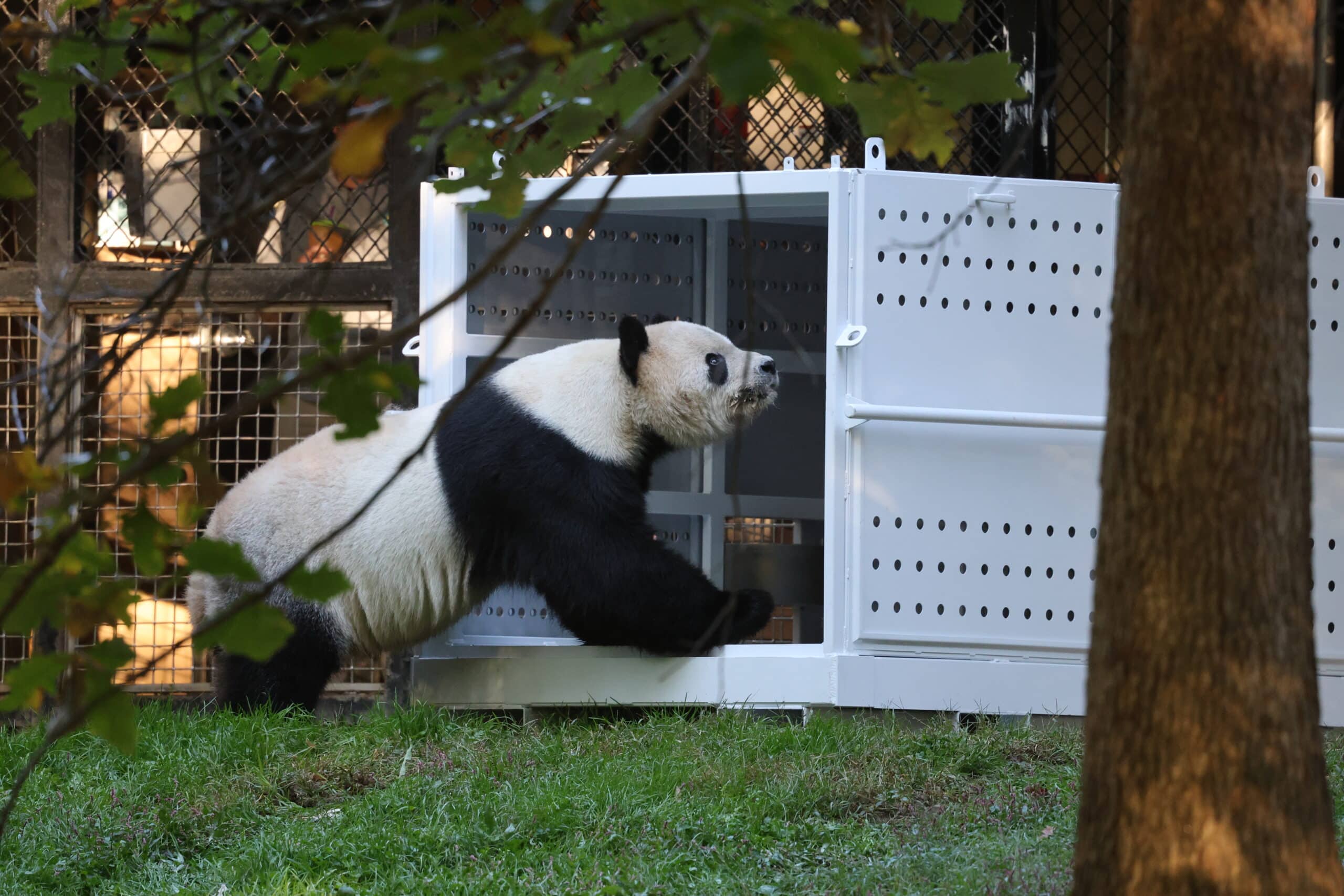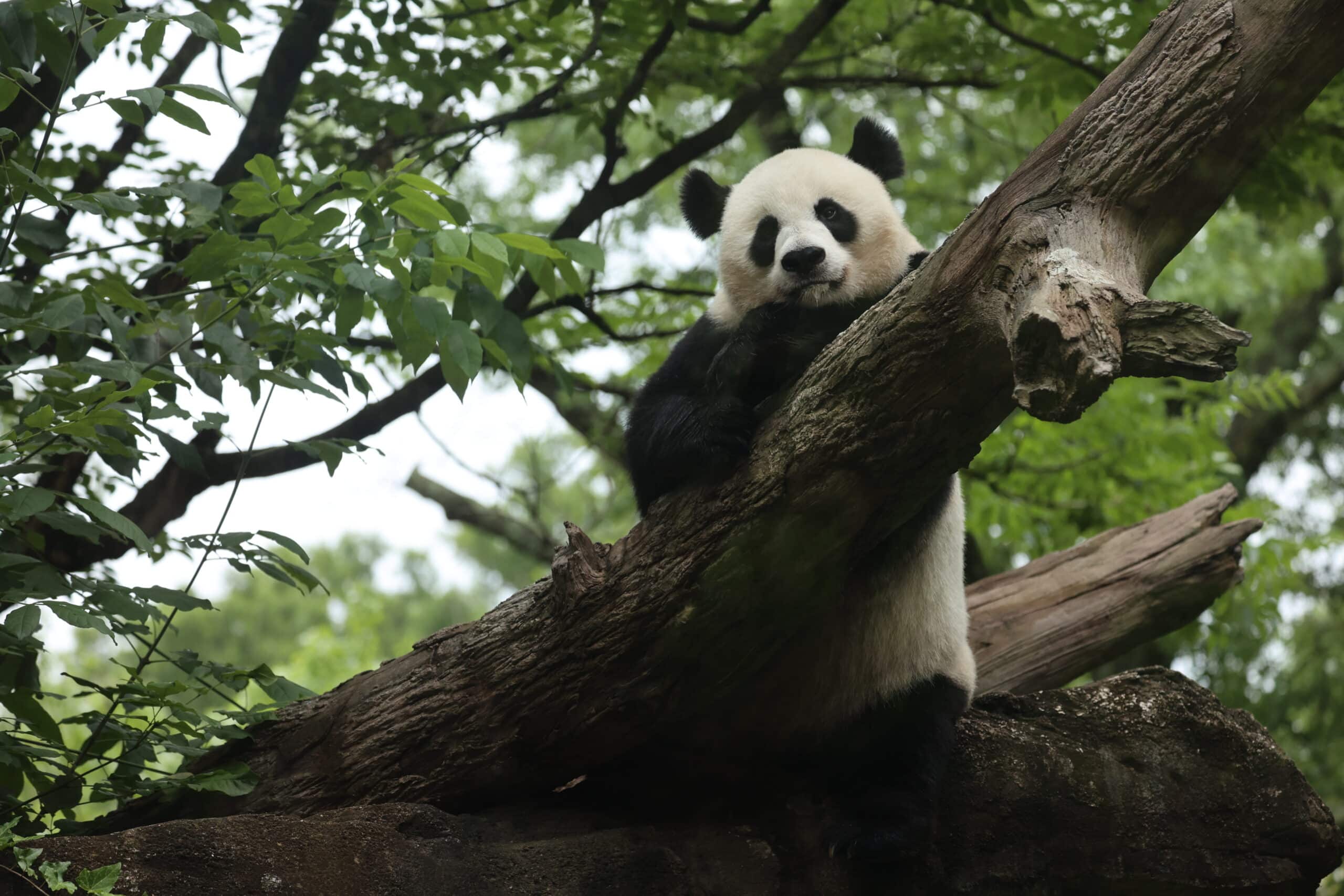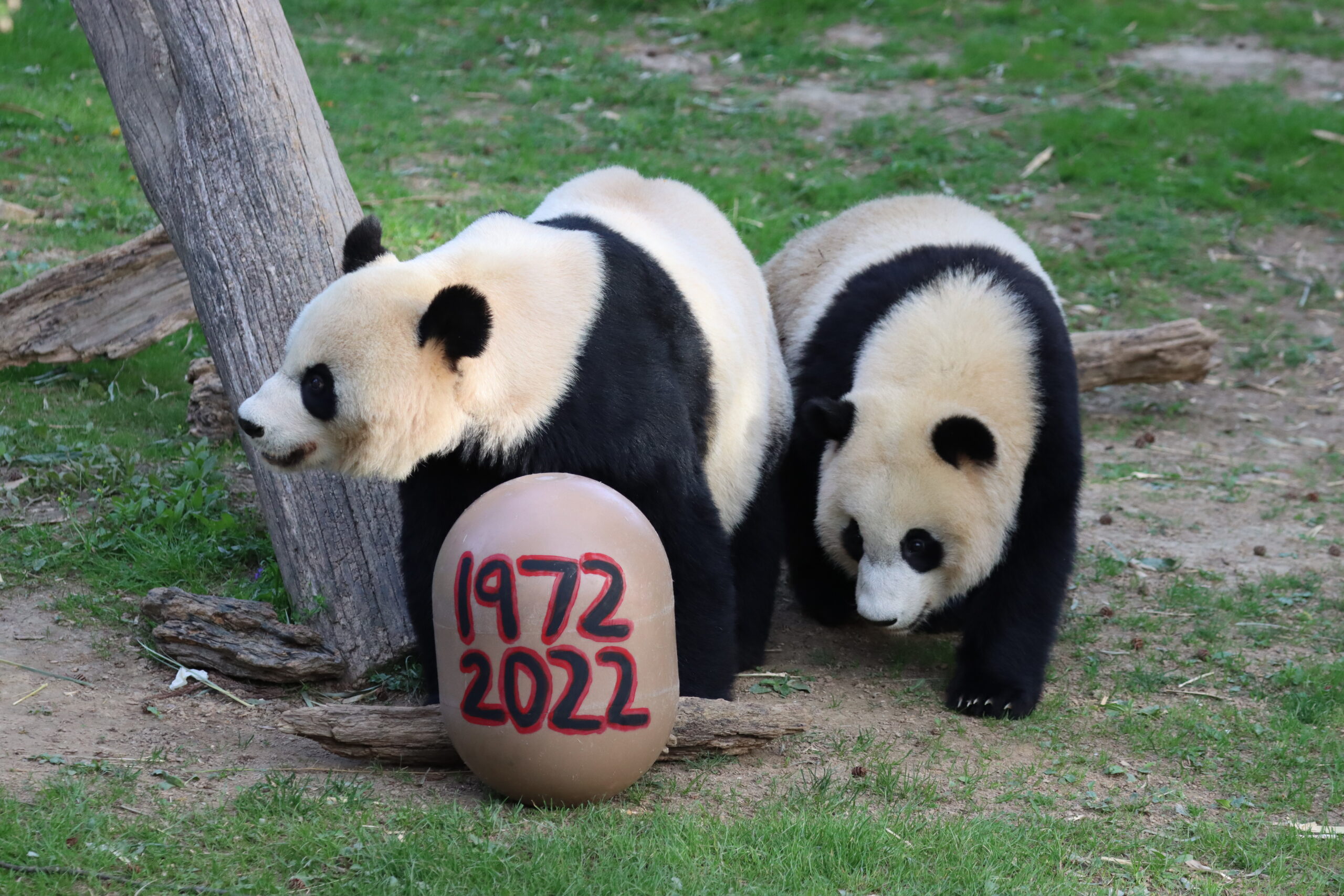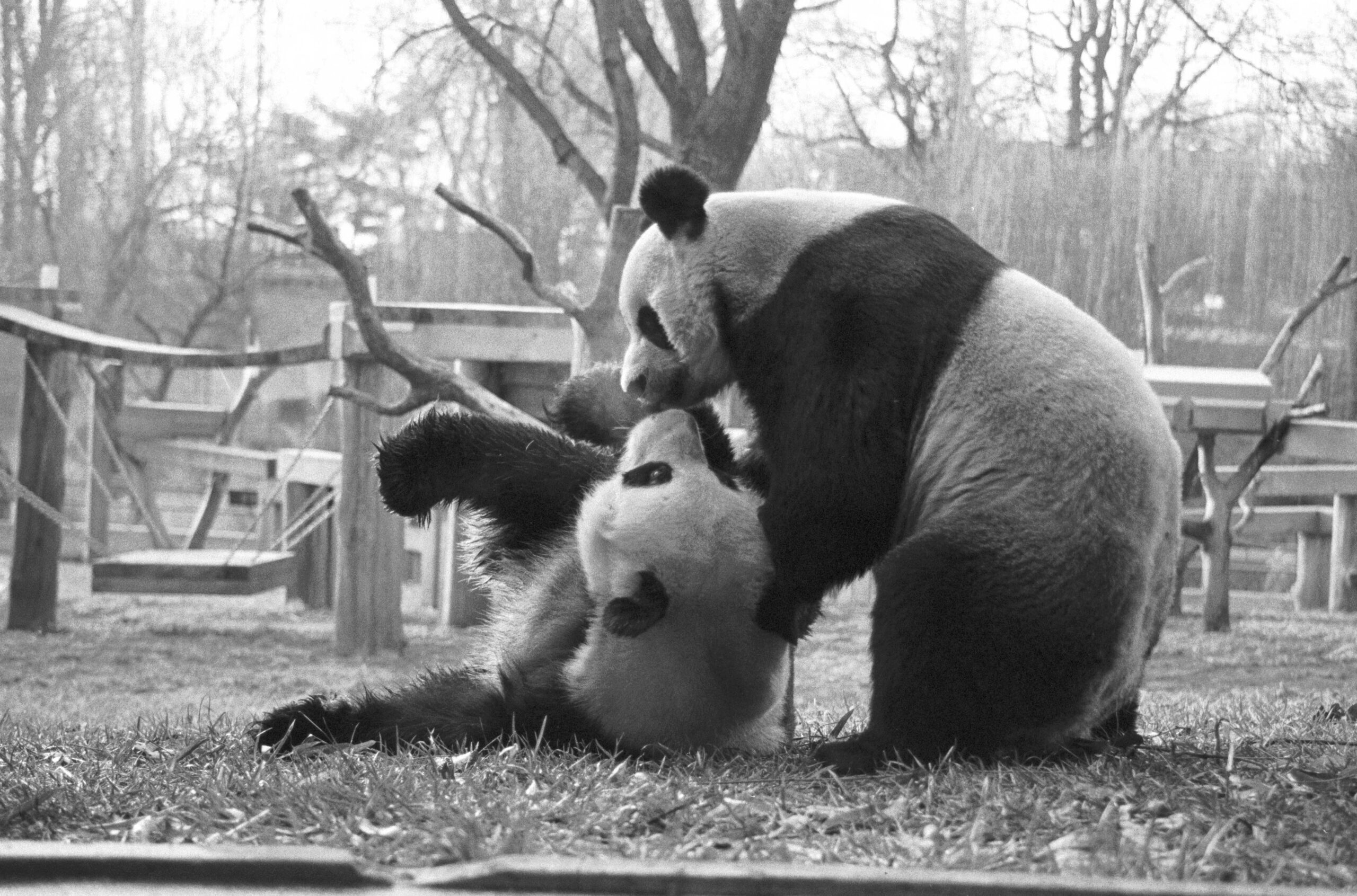Mei Xiang gave birth to twins at the Smithsonian's National Zoo on August 22, 2015
Mei Xiang gave birth to twins at the Smithsonian’s National Zoo on August 22, 2015. The first giant panda cub was born at 5:35 p.m. and the secondwas born at 10:07 p.m. Shortly after the second birth, a panda team of three keepers retrieved one of the cubs per the Zoo’s Giant Panda Twin Hand-Rearing protocol. The cub was placed in an incubator and cared for by veterinarians and panda keepers.
The panda team witnessed the birth of a cub at 5:35 pm. Mei Xiang reacted to the cub by picking it up. The panda team began preparing for a birth when they saw Mei Xiang’s water break at 4:32 pm and she was already having contractions. The sex of the cubs won’t be determined until a later date.
“All of us are thrilled that Mei Xiang has given birth. The cubs are vulnerable at this tiny size but we know Mei is an excellent mother,” said Zoo director Dennis Kelly.”Thank you to all of our excellent keepers, veterinarians, researchers and Chinese colleagues who contributed and therefore deserve credit for this conservation success.”
The panda team believes the first cub they retrieved was the second cub born at 10:07 p.m. This cub continues to vocalize very well and appears healthy. It weighed 138 grams last night and this morning weighed 132.4 grams. The cub has urinated and defecated – all good signs. The team fed the cub three times overnight at 2:20 a.m., 3:40 a.m., and 5:00 a.m. The cub received 30 – 40% of the serum it was hand-fed. The serum was banked from blood drawn from Mei Xiang last April during the artificial insemination. The nursing bouts were short but the team considers them successful. The goal was to give the cub antibodies (colostrum alternative) as it has not yet nursed on Mei Xiang. This cub has now been marked with a little green food coloring on its left hip.
At approximately 6:30 a.m. this morning, the panda team was able to swap cubs. This cub, believed to be the first born, weighs 86.3 grams. It is vocalizing very well and appears strong. The panda team does not plan to feed this cub as it will be switched back to Mei Xiang in a couple of hours. However, they are prepared to feed the cub if it demonstrates certain behaviors.
The Smithsonian’s National Zoo is one of a few zoos with expert nutritionists on staff. They have prepared formula and trained for this scenario. Formula ingredients include: water; human baby formula; and puppy formula. The ingredients are mixed together and strained to omit clumps. Our concern now is whether Mei Xiang will allow the panda team to consistently swap the cubs. The team developed a few different strategies and will continue to try different methods of swapping and hand-rearing. A lot will be dictated by Mei Xiang.
The panda team will alternately swap the cubs, allowing one to nurse and spend time with Mei Xiang while the other is being bottle fed and kept warm in an incubator. The primary goal for the panda team is for both cubs to have the benefit of nursing and spending time with their mother. It is too early to guess about when the cubs will be placed together.
Giant pandas give birth to twins approximately 50 percent of the time. This is only the third time a giant panda living in the United States has given birth to twins. There are only two other female giant pandas who have successfully reared twins and it required a lot of human support.
Veterinarians first detected evidence of a fetus on an ultrasound Aug. 19. It was the first time they had ever seen a fetus on an ultrasound, as Mei Xiang usually chooses not to participate in ultrasounds in the final weeks of her pregnancies and pseudopregnancies. At the time, the fetus was about 4 centimeters in length.
Reproductive scientists from the Smithsonian’s National Zoo and Conservation Biology Institute (SCBI) artificially inseminated Mei Xiang April 26 and 27. For the first time, scientists used semen collected from a giant panda named Hui Hui (h-WEI h-WEI). He lives at the China Conservation and Research Center for the Giant Panda in Wolong and was determined to be one of the best genetic matches for Mei Xiang. A cub by Mei Xiang and Hui Hui would be very genetically valuable, helping to preserve the genetic diversity of the panda population in human care.
The sample from Hui Hui was frozen and flown from China to the cryopreservation bank at the National Zoo. Scientists also used high-quality fresh semen collected from the Zoo’s male giant panda, Tian Tian (t-YEN t-YEN), for the artificial inseminations. DNA analysis will determine the sire of the cub.
SCBI scientists confirmed that a secondary rise in giant panda Mei Xiang’s urinary progesterone levels began July 20. This signaled that Mei Xiang would either have a cub or experience the end of a pseudopregnancy within 30 to 50 days.
At that time, Mei Xiang also began exhibiting behaviors consistent with pregnancy or pseudopregnancy. She started nest building, spending more time in her den, sleeping more and eating less. In recent weeks, she also spent time body licking and cradling toys. The area of the David M. Rubenstein Family Giant Panda Habitat closest to her den closed to provide her with quiet, since Mei Xiang shows extra sensitivity to noise during the final weeks of a pseudopregnancy or pregnancy. Keepers moved to round-the-clock behavior watch via panda cam to monitor Mei Xiang Aug. 20.
Giant panda Bao Bao will celebrate her second birthday at the Smithsonian’s National Zoo on August 23, 2015 at 10 a.m. The Zoo’s nutrition department crafted a frozen fruitsicle cake comprised of some of Bao Bao’s favorite treats, including honey, apple juice, apple sauce, bamboo, carrots and beet juice.
Photo Credit: Pamela Baker-Masson, Smithsonian’s National Zoo
Source: Smithsonian’s National Zoo












